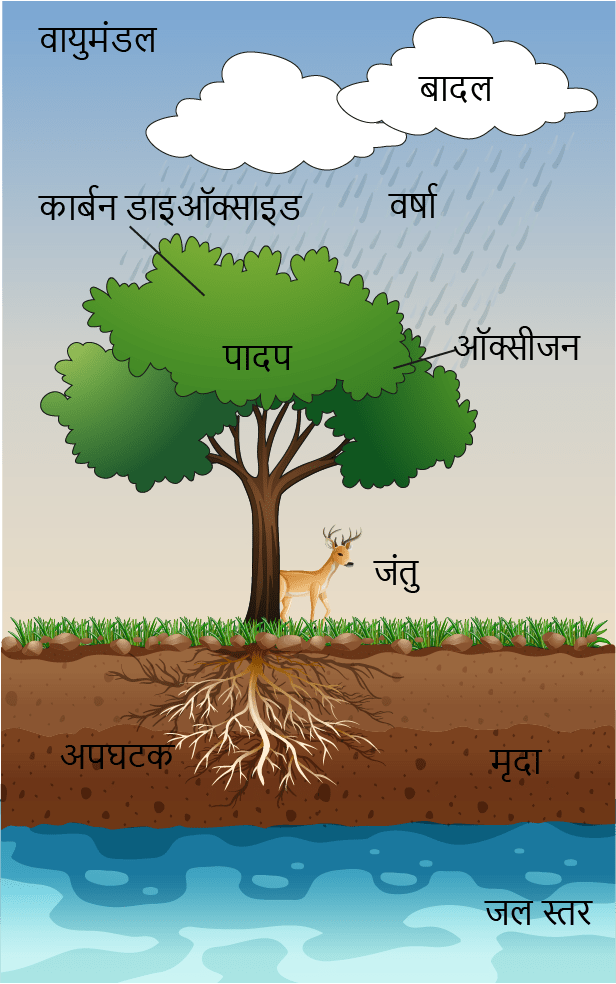Solved NCERT Questions For Class 7 Science Chapter 17 In Hindi - Free PDF
FAQs on NCERT Solutions For Class 7 Science Chapter 17 Forests: Our Lifeline in Hindi - 2025-26
1. Explain how forests prevent floods.
Forests act like a natural absorber of rainwater. Forests allow the rainwater to seep deep into the soil because of the roots of the trees. When it starts to rain, the water does not directly fall to the ground. Instead, it first hits the trees and plants and then falls to the ground. It slowly starts to drip on the forest grounds. Hence, preventing floods from occurring in the area.
2. What are decomposers? Name any two of them. What do they do in the forest?
Decomposers refer to the humus that is formed when microorganisms convert dead plants and humans to humus. A few examples of decomposers include Bacteria and fungi. Decomposers are generally helpful in the forest. They help in maintaining the natural nutrient balance of the forest soil. They convert and recycle the dead matter into humus, which eventually mixes with the forest soil and helps provide nutrients to the trees and plants.
3. How many questions are present in Chapter 17 of NCERT Solutions for Class 7 Science?
At the end of Chapter 17 of NCERT Solutions for Class 7 Science, there are many exercise questions available for the students to practice from. These exercise questions help strengthen the fundamental understanding of the student. There are around 13 exercise questions available for chapter 17. All the questions available in this chapter are very important from the examination point of view. All the solutions are also available on the vedantu app.
4. What concepts can I learn from Chapter 17 of NCERT Solutions for Class 7 Science?
Class 7 Science Chapter 17 of NCERT Solutions talks about Forests: Our Lifeline. NCERT solutions provide this chapter in an easy language helping the students to understand this chapter better. The NCERT solutions contain materials starting from the issues in the forests to why it is important in our life. There are materials available about natural resources as well. There are many concepts that students can learn from Chapter 17 of NCERT Solutions for Class 7 Science.
5. Name a few products that we get from the forest.
Forests have always been an important part of our ecosystem as well as our daily life. They have always been the carrier of many natural resources for decades. Forests are also home to many special species and different kinds of plants and animals. Even today, there are many essential products, which we use daily that we get from the forest. Some of these products include wood, medicines, spices, gum, and even paper.


























